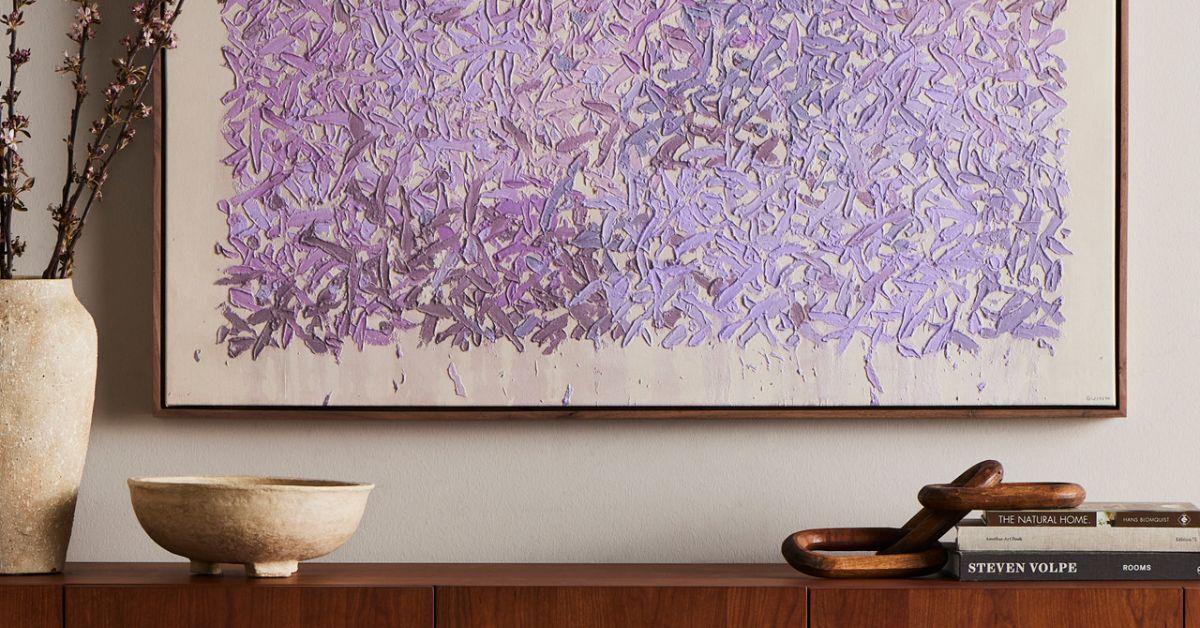There are many seemingly small details that enhance the world of modern art. Artists strive to connect with their audiences on a deeper, more sensory level. One common example of this is texture. Even without the need for physical touch to experience these ridges, viewers can visually engage with pieces on a deeper level through texture.
Wonderwall Studio is here to explore how modern artists use texture in their work and how their ideas and influences continue to inspire and influence more contemporary pieces. We aim to highlight different techniques, materials, and even concepts that add extra layers of depth in more ways than one.
The Role of Texture in Modern Art
When referring to art, texture refers to the surface quality of a specific piece. Some of the most common texture options are smooth, rough, gritty, or soft. Texture can come across through an actual physical application of the materials or just appear a certain way through skillful techniques.
Modern artists use texture as a way to convey meaning or merit to a piece and help it serve as part of the narrative. Artists can use texture to bring weight and movement to a piece and use it to guide viewers toward a certain reaction or encourage them to form their own experiences.
Tangible Texture: A Growing Obsession
Tangible texture is the process where an artist physically alters the surface of their piece and uses texture to play with light and shadow. Some of the most popular mediums for tangible texture are paint, fabric, and found objects. This technique has become particularly popular in mixed-media art, where the interplay of different materials allows artists to push the boundaries of traditional painting and sculpture.
Varying layers of roughness can communicate an artist’s vision before one even considers the subject material. Soft, smooth textures bring a sense of calmness and serenity, while rougher, jagged textures may convey chaos or action.

The Rise of Visual Texture
Using physical texture is a surefire way to grab the viewer’s attention, but visual or implied texture engages the mind and is an incredible showcase of skill. A popular style that uses visual texture is Trompe-l’œil, which creates the illusion of depth and physicality on what is purely a flat, smooth surface. Artists employ this technique by painting intricate details, layering color, or using pointillism and other methodologies to trick the eye.
Visual texture is a popular choice for artists who focus on abstraction or surrealism. Tightly woven strokes can convey movement, and blurring it may give an illusion of depth or physicality to the piece.
Breaking Boundaries With Found Objects
Found objects are a more recent trend in contemporary art and arguably shift the discussion about what we perceive as art. Artists can use metal scraps, wood, or even broken electrical components to build a piece and create a narrative. Unlike using paint for tangible or visual texture, this process usually involves the careful arrangement of these pieces to create a texture that flows into a sculpture.
We can use these assembly techniques to layer objects in the composition and add a sense of multidimensionality to art. It’s a style that’s popular with critics and art enthusiasts because it manages to seamlessly blend texture with meaning and create a bond between the materials and the artist’s message.
Innovative Techniques in Modern Painting
When considering how modern artists use texture in their work, you need to consider how contemporary creators use the old tools in new ways. Artists can use tools like palette knives, spatulas, and even sponges to create a wide range of tactile effects beyond traditional brushes.
A palette knife can create heavy, sculptural strokes to give a piece more tangible physicality, while a sponge can quickly and effectively create softer textures.
An important strategy in texture is layering. Artists can build up multiple layers of paint and apply them to alter the density and richness of their finished pieces. There are also contemporary texturing agents like modeling pastes or gel mediums, which allow artists to consider alternative routes for physical texture. With contemporary options, artists can turn a two-dimensional canvas into a more engaging three-dimensional space.

Texture in Installation Art
Installation art, by its nature, invites viewers to experience works beyond the visual. Artists in this field deploy texture to immerse audiences in multisensory environments. The use of texture in installation art often invites interaction, allowing viewers to walk through, touch, or even contribute to the piece.
Artists should consider contrasts when it comes to these installations. You can juxtapose a rugged weather element with a smoother, more polished surface to create visual tension that resonates with the audience. Learning how these textures can work together creates more opportunities for artists to symbolize specific themes in their work, such as the passage of time or the serenity of nature.
Cultural Influences on Textural Practices
You can’t deny the impact of cultural identity in modern art. Artists from a range of backgrounds, histories, and lifestyles can bring deeply personal elements into the work they create. Heritage can greatly inspire a piece, and artists may use different styles or mediums to convey texture. For example, paper crafting is a popular style in many Latin-American or Asian cultures, and these smooth or crinkled textures can add tactile clues to the origins of a piece.
By fusing texture with cultural symbolism, modern artists amplify their message, ensuring that their work resonates on both an aesthetic and emotional level. The intentional use of texture gives viewers a chance to consider the personal stories that go into each piece and invites them to consider deeper meanings.
How Texture Continues To Shape Modern Art
Today’s modern artists are reshaping the narrative of texture in art, making it a focal point rather than a complementary element. Tactile installations and even digital simulations give audiences a chance to explore and experience texture in modern art. The shifting styles, new tools, and engaging opportunities allow us to further expand the human experience and connection to these works.
Appreciating and studying the diverse applications of texture encourages a deeper connection with both the work and its creator, offering a richer appreciation of the complexities of modern art.
Discover how Wonderwall Studio can transform your space with our stunning textured art prints. Explore their curated collection today to find pieces that bring depth, character, and a touch of modern sophistication to your home or office.



